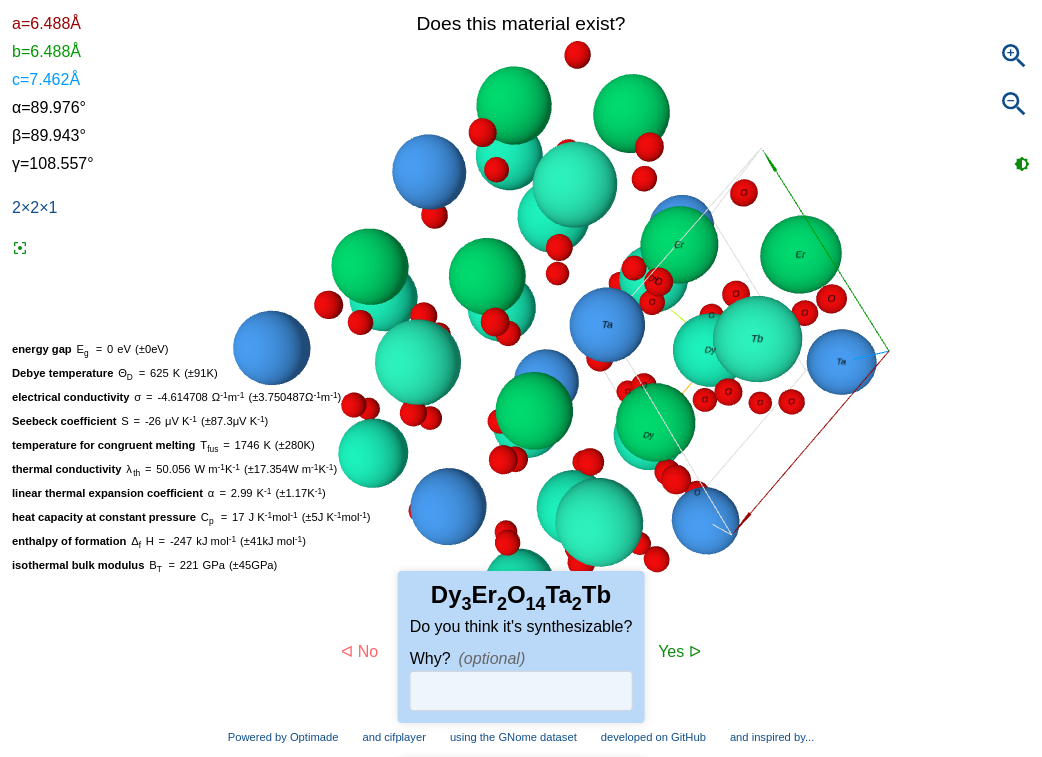Get given random crystal structures predicted by ML materials discovery projects, and vote on whether you think it should be synthesizable (or, at least, whether it is worth trying!)
Currently uses cifplayer and data from the OPTIMADE API for the recent Google DeepMind paper. The physical properties prediction is done dynamically by MPDS ML server.
The cifplayer is powered by $mol framework. Note that, unlike many other frontend frameworks, $mol provides the same single environment for all its projects, under the standard namespace scheme. That is, all your $mol-based code lives inside the same directory $MOL_HOME. So if you don't have $MOL_HOME yet, please create it and navigate there
mkdir $MOL_HOME && cd $MOL_HOMEThen build with
npm exec mam optimade/tmdne/appThis will fetch the MAM server (MAM stands for the $mol abstract modules), clone this project, and compile it inside optimade/tmdne/app/-/ subfolder. You will need the web.js bundle, that's it.
Similarly to above, inside the $MOL_HOME, start the MAM dev-server with
npm exec mamand navigate to http://localhost:9080, there select optimade namespace, then tmdne, then app. As you go through the folder structure, the selected project is being cloned and compiled on the fly, inside the corresponding subfolder of $MOL_HOME.
